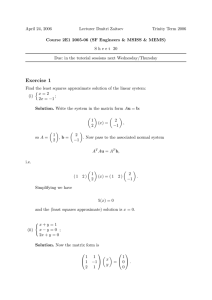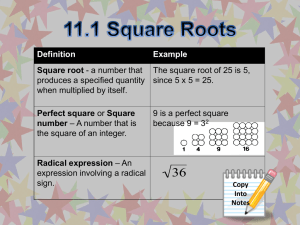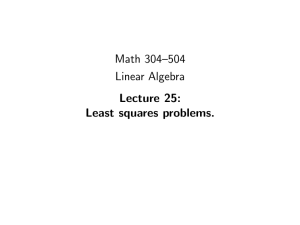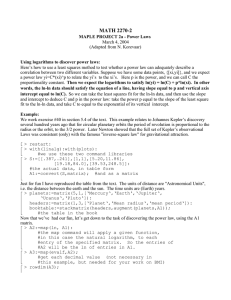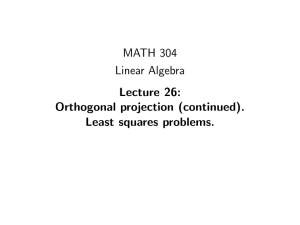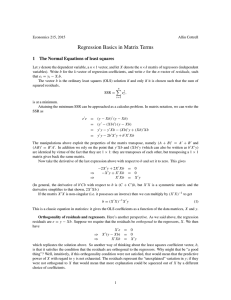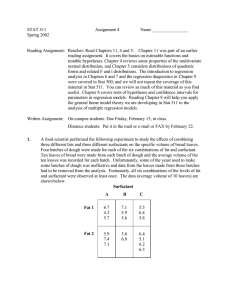Highlights Math 304 Solving unsolvable problems Example
advertisement
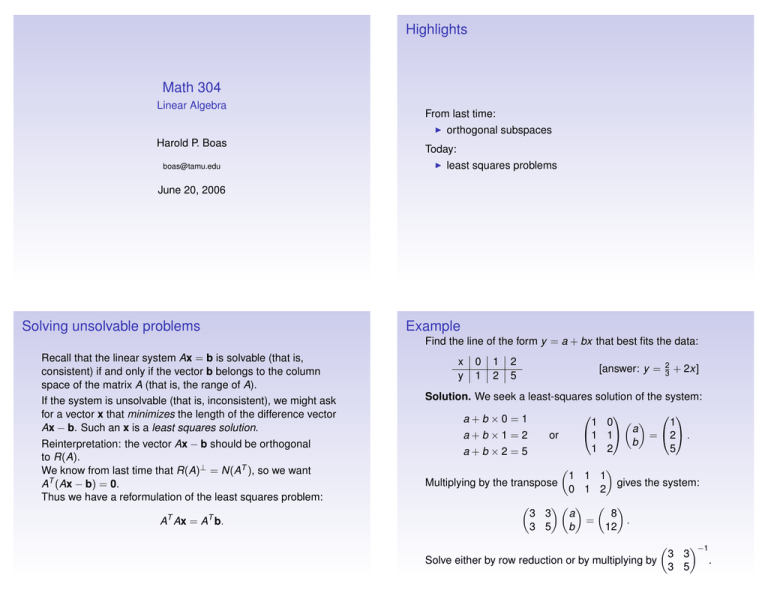
Highlights Math 304 Linear Algebra From last time: I Harold P. Boas boas@tamu.edu orthogonal subspaces Today: I least squares problems June 20, 2006 Solving unsolvable problems Example Find the line of the form y = a + bx that best fits the data: Recall that the linear system Ax = b is solvable (that is, consistent) if and only if the vector b belongs to the column space of the matrix A (that is, the range of A). If the system is unsolvable (that is, inconsistent), we might ask for a vector x that minimizes the length of the difference vector Ax − b. Such an x is a least squares solution. Reinterpretation: the vector Ax − b should be orthogonal to R(A). We know from last time that R(A)⊥ = N(AT ), so we want AT (Ax − b) = 0. Thus we have a reformulation of the least squares problem: AT Ax = AT b. x y 0 1 1 2 2 5 [answer: y = 2 3 + 2x] Solution. We seek a least-squares solution of the system: a+b×0=1 a+b×1=2 1 0 1 1 1 a = 2 . b 1 2 5 or a+b×2=5 1 1 1 Multiplying by the transpose gives the system: 0 1 2 3 3 a 8 = . 3 5 b 12 Solve either by row reduction or by multiplying by 3 3 3 5 −1 . Remarks on AT Ax = AT b I AT A is always a symmetric square matrix. I AT Ax = AT b is always a consistent system. I There is a unique least squares solution if and only if AT A is an invertible matrix. I There is a unique least squares solution if and only if the columns of A are linearly independent (that is, A is an m × n matrix of rank n).




